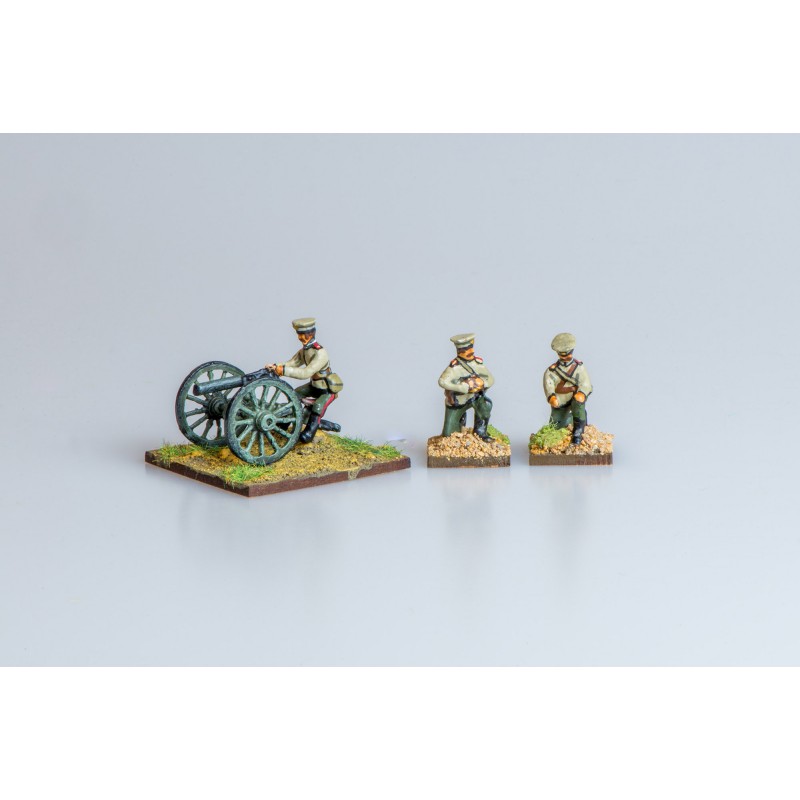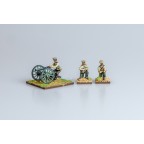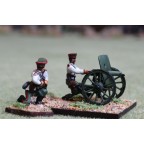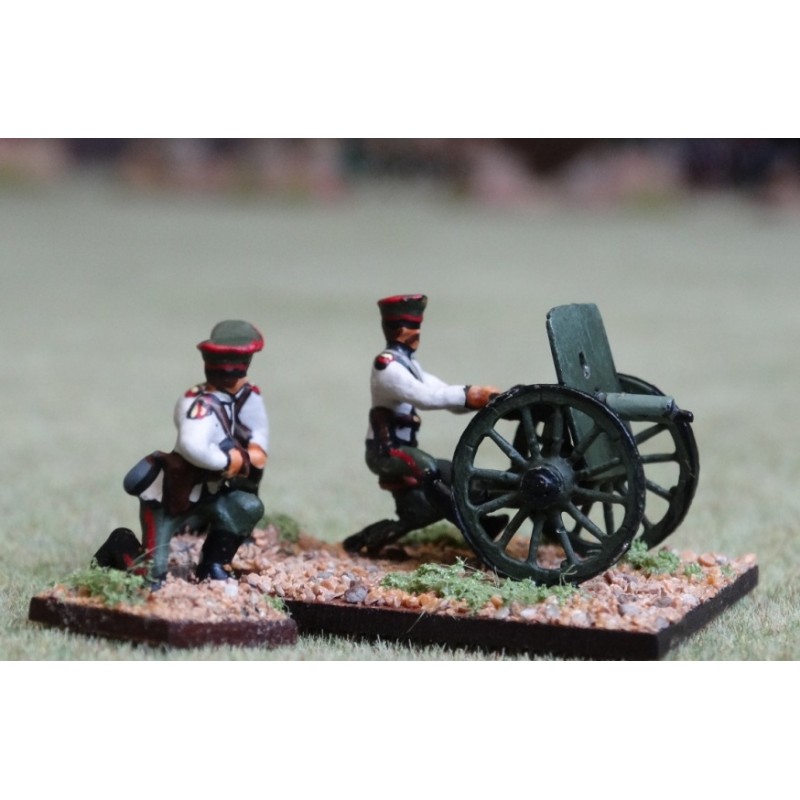This product is sold as an unpainted kit.
Additional Image.
1. Image is a conversion by Mark Lodge using the Boer War pom-pom gun shield (CE 123/124). Image by kind permission of Alan Cook.
2. Two Russian MGs deployed to take on a Japanese frontal attack. From the collection of Roy Boss.
THE MAXIM MACHINE GUN
In 1899 the Imperial Russian Army purchased 58 Maxim machine guns. A further 450 guns were delivered to front line troops before the end of the war.
The 1896 Maxim machine gun on a Vickers, Sons, & Maxim carriage was manufactured by the Maxim Nordenfelt Guns and Ammunition Company. Trials demonstrated that the Maxim could fire 500-600 rounds per minute. It was recoil operated, water cooled and fed with a 250-round canvas ammunition belt. Effective range was approximately 2,000 yards. The gun, along with its carriage was heavy, bulky, and awkward to move on the battlefield. The gun was operated by a team of four to six. Apart from the gunner, other crew were needed to speed reload, spot targets, and carry and ready ammunition and water. Several men were needed to move or mount the heavy weapon.
The Maxim was an enormously reliable gun that could fire almost indefinitely provided that enough ammunition was available and the water jacket, which kept the thin barrel cool, continually topped up. The disadvantage of its size and poor manoeuvrability was that it made the gun less flexible in attack than the lighter air-cooled Hotchkiss. There were also issues due to the shrinkage of the canvas making it more difficult for the gun’s mechanism to extract the cartridge.
THE WARGAMER may wish to take account of high rate of fire and ammunition supply, poor manoeuvrability and the chance of jamming following wet weather. I like to use small D6 attached to units, particularly artillery and machine guns to represent fixed ammunition supply. Additional ammunition being available through some form of resupply method during the game but at a cost of time and firepower.
Source: ‘Combat, Russian Soldier versus Japanese Soldier, Manchuria 1904-05’, David Campbell, Osprey Publishing, 2019.
Jacklex Miniatures Russo-Japanese War 20mm metal wargame figures.





-144x144.jpg)

-800x800.jpg)